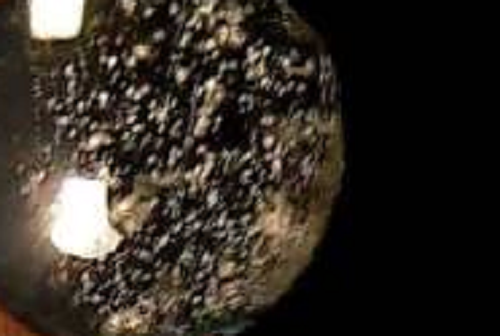Asteroid hyalosis is a disorder marked by the presence of tiny, white, calcium-containing particles suspended in the vitreous humor, the gel-like fluid that fills the gap between the lens and the retina in the eye. Lipids and calcium phosphate are the main components of these particles.
Asteroid Hyalosis symptoms
Floaters: The appearance of floaters, which are little specks or threads that float across the field of vision, is the most common symptom of asteroid hyalosis.
Reduced Visual Acuity: Asteroid hyalosis can occasionally result in a modest reduction in visual acuity, though this is usually not a serious problem.
Asteroid Hyalosis Causes
The specific cause of asteroid hyalosis is unknown. However, it has been linked to advancing age and a few underlying diseases, including diabetes and hypertension.
Asteroid Hyalosis Diagnosis
A thorough eye examination is typically used to identify asteroid hyalosis. To determine whether the recognizable white particles are present in the vitreous humor, an ophthalmologist will do a variety of evaluations, including a dilated eye exam.
Asteroid Hyalosis Treatment
Asteroid hyalosis typically does not result in considerable visual impairment, hence treatment is not usually necessary. To keep track of any changes in the condition, regular eye exams are advised. If the floaters become severe and impair vision, a surgical treatment known as vitrectomy may be recommended.
Synchysis Scintillans vs. Asteroid Hyalosis
The presence of floaters in the vitreous humor is a common feature of both asteroid hyalosis and synchysis scintillans, although there are some significant distinctions between the two conditions. Here are some of the key variations:
Synchysis scintillans features reflecting cholesterol crystals, whereas Asteroid Hyalosis is defined by the presence of calcium-containing particles.Synchysis scintillans is frequently connected to other eye disorders or trauma, whereas Asteroid Hyalosis is connected to age and underlying medical issues. Synchysis scintillans may induce more pronounced visual disturbances due to the reflecting nature of the cholesterol crystals.
Asteroid hyalosis ICD-10
The vitreous humor of the eye develops tiny white or yellowish opacities known as asteroid hyalosis. However, there is no specific ICD-10 code for asteroid hyalosis. It is instead categorized as crystalline deposits in the vitreous body. For reimbursement, certain ICD-10 codes can indicate a diagnosis:
H43.20: Vitreous degeneration, unspecified
H43.21: Crystalline deposits in vitreous body, right eye
H43.23: Crystalline deposits in vitreous body, bilateral
It's vital to remember that these codes can be used to identify various disorders that involve crystalline deposits in the vitreous body in addition to asteroid hyalosis.











0 Comments